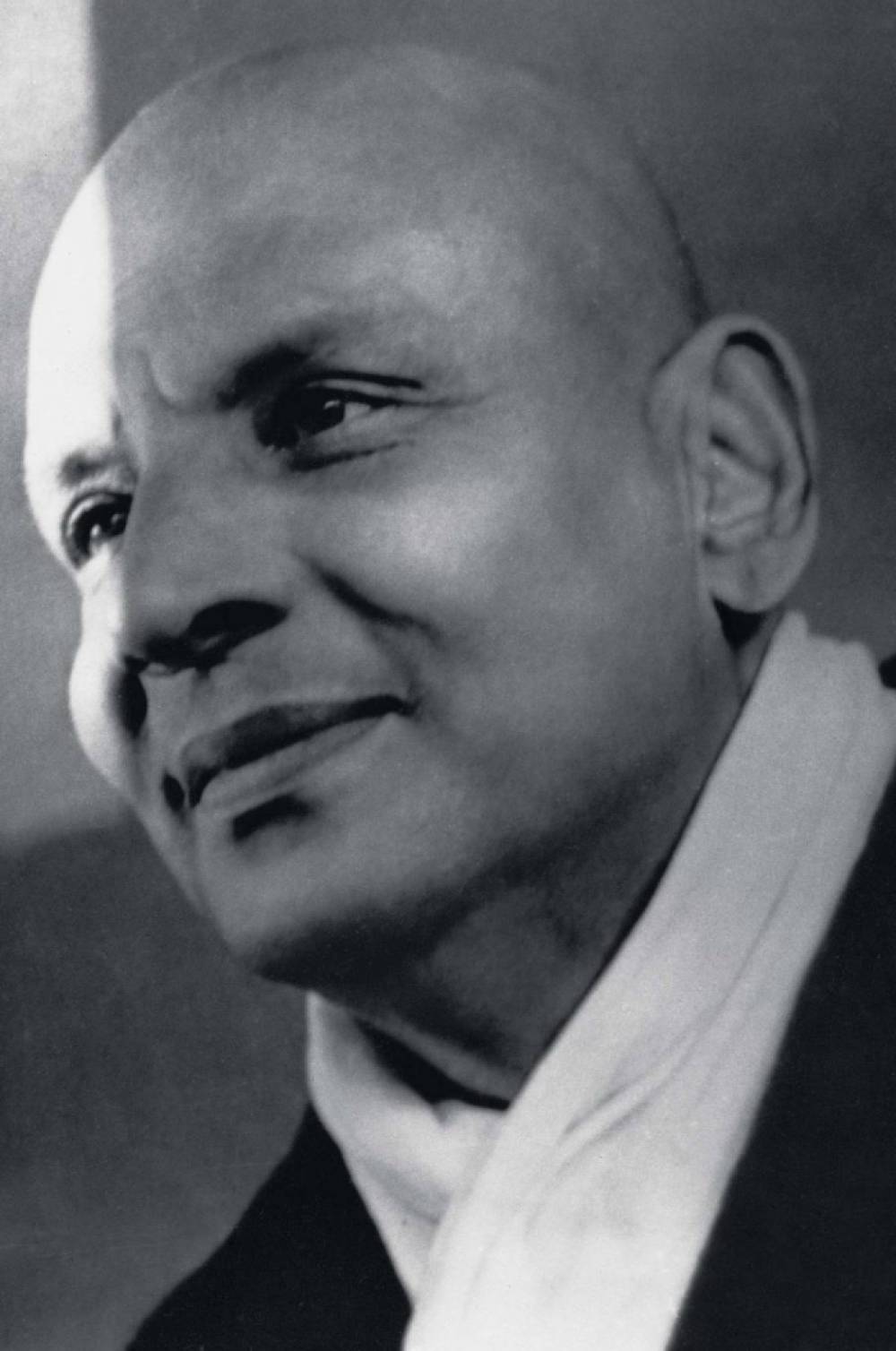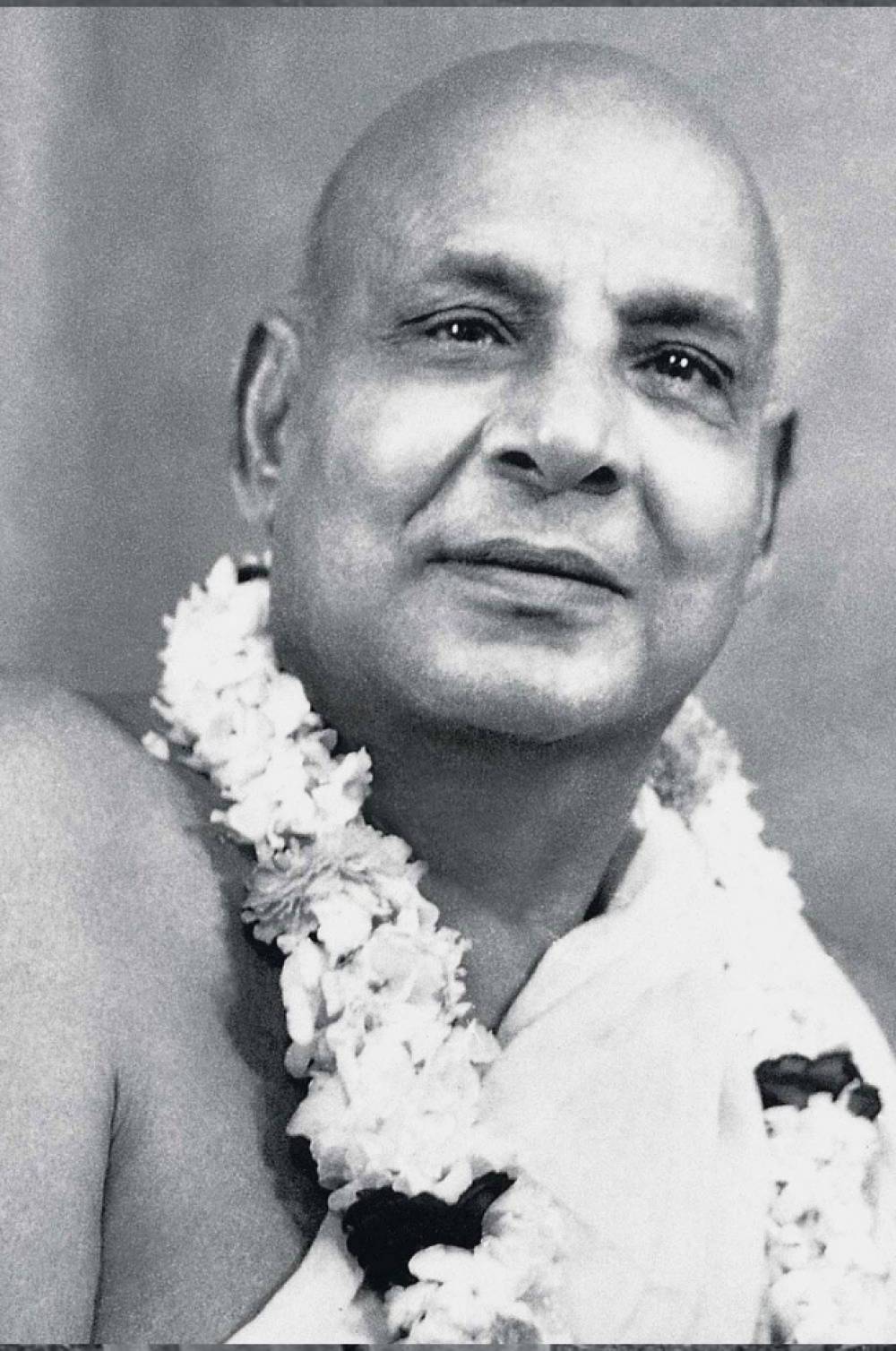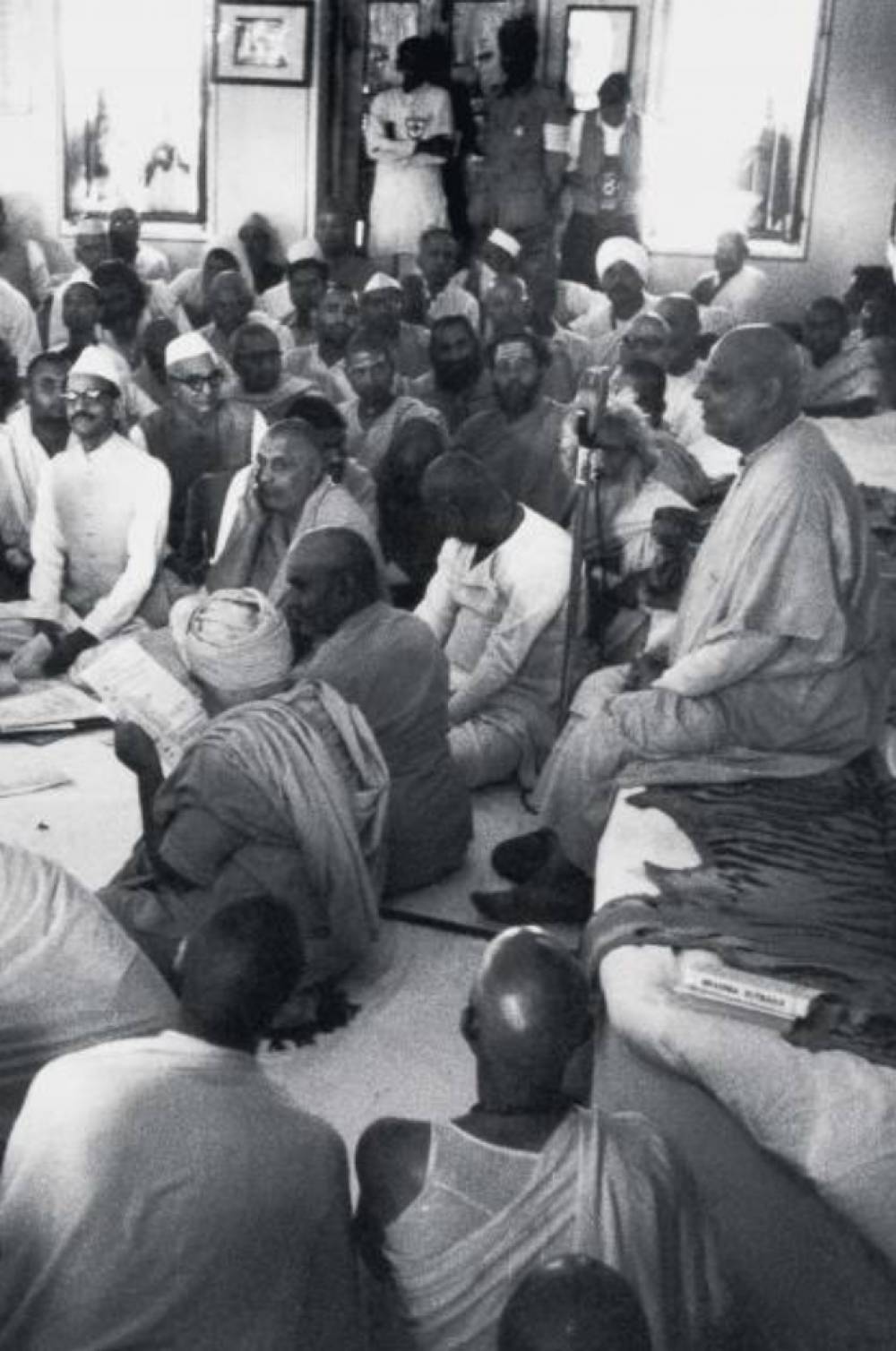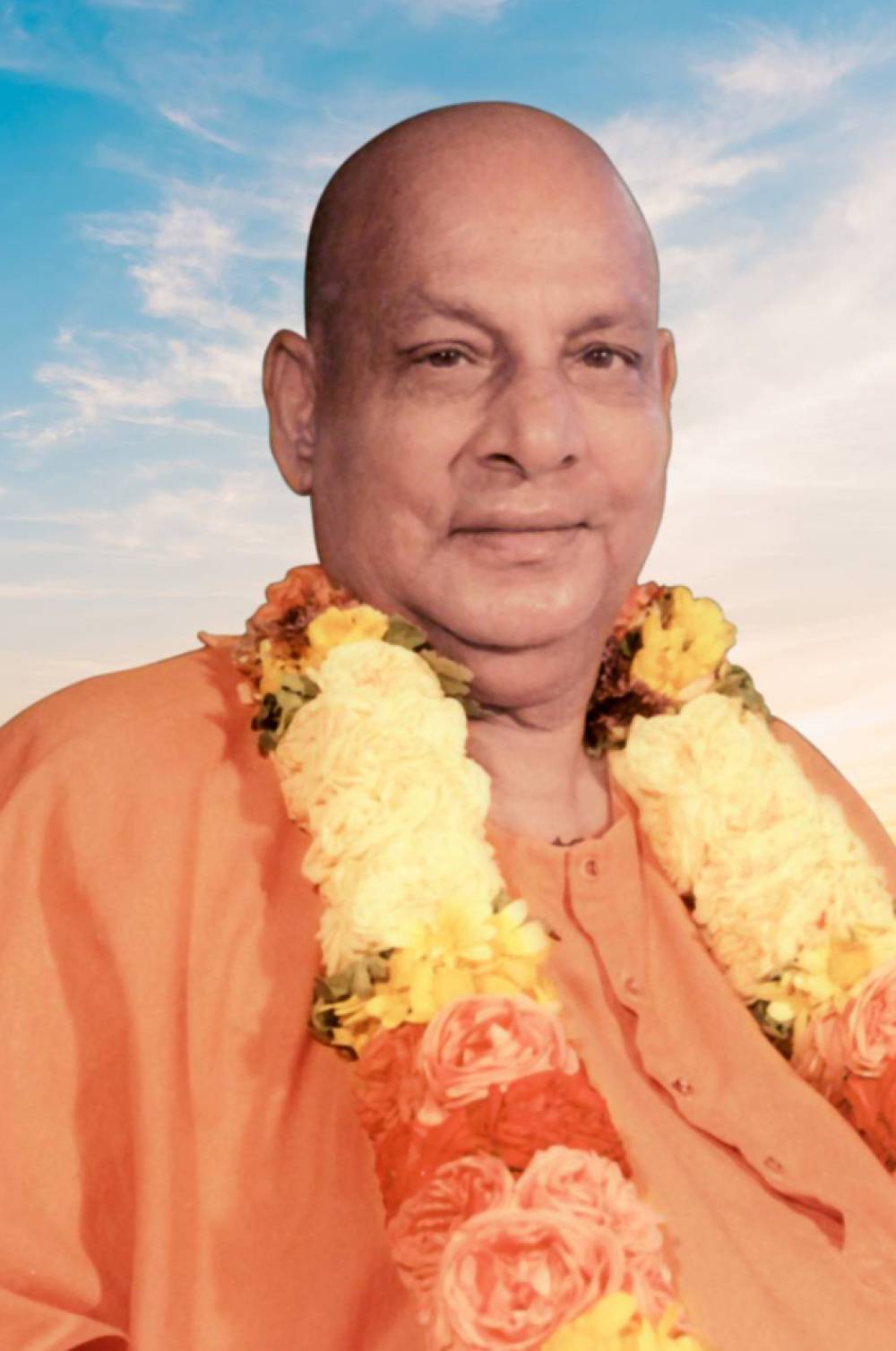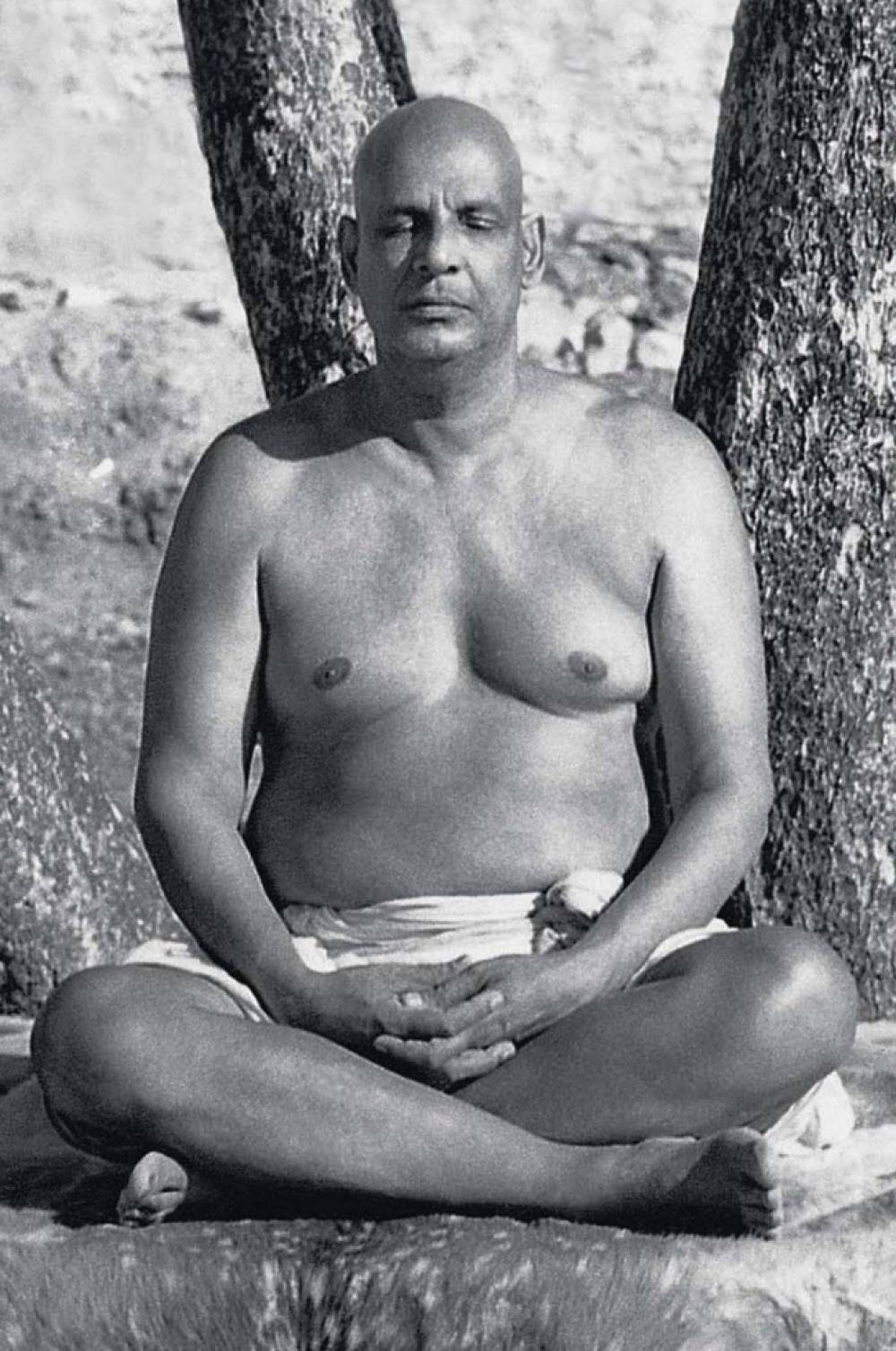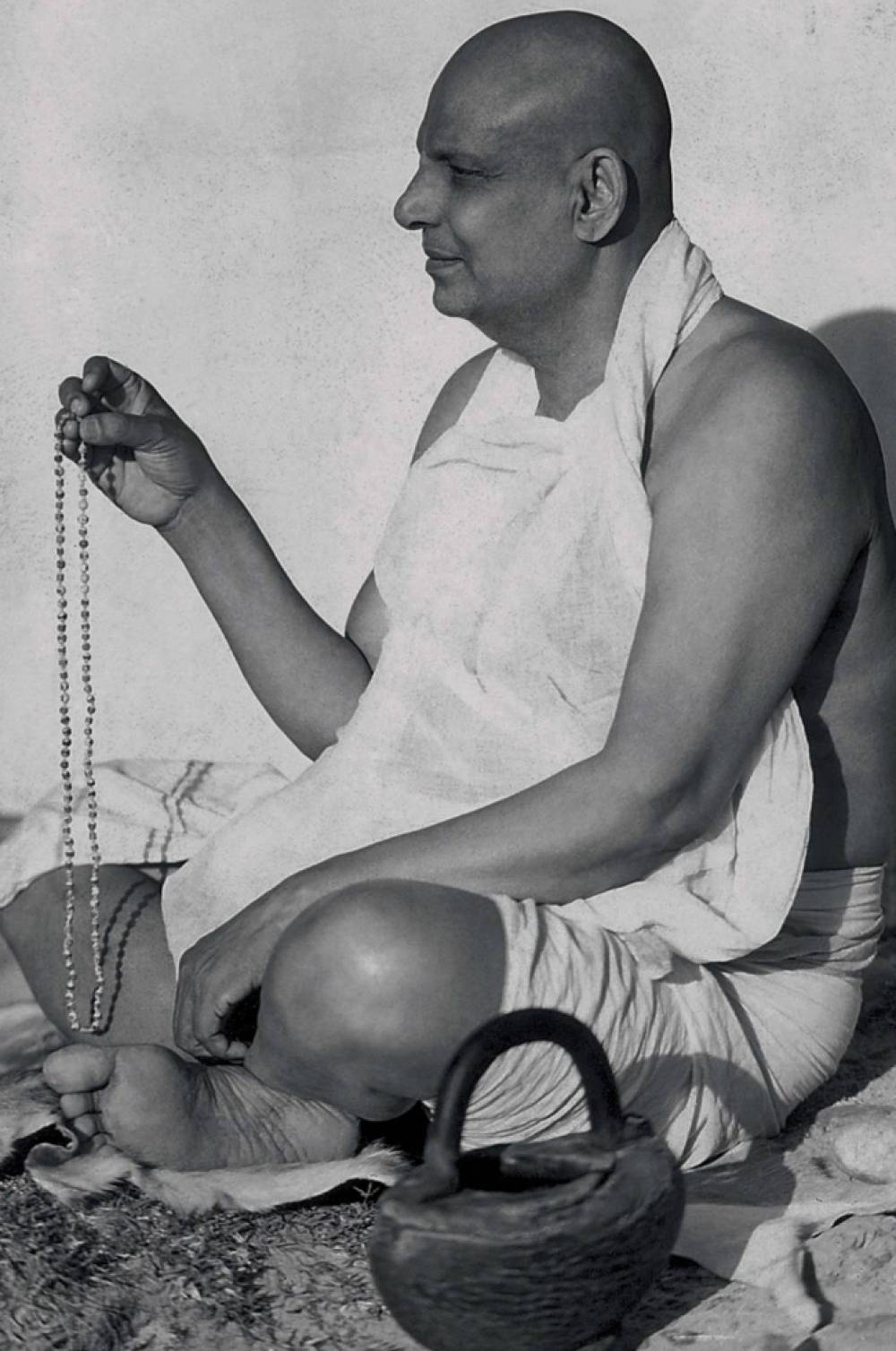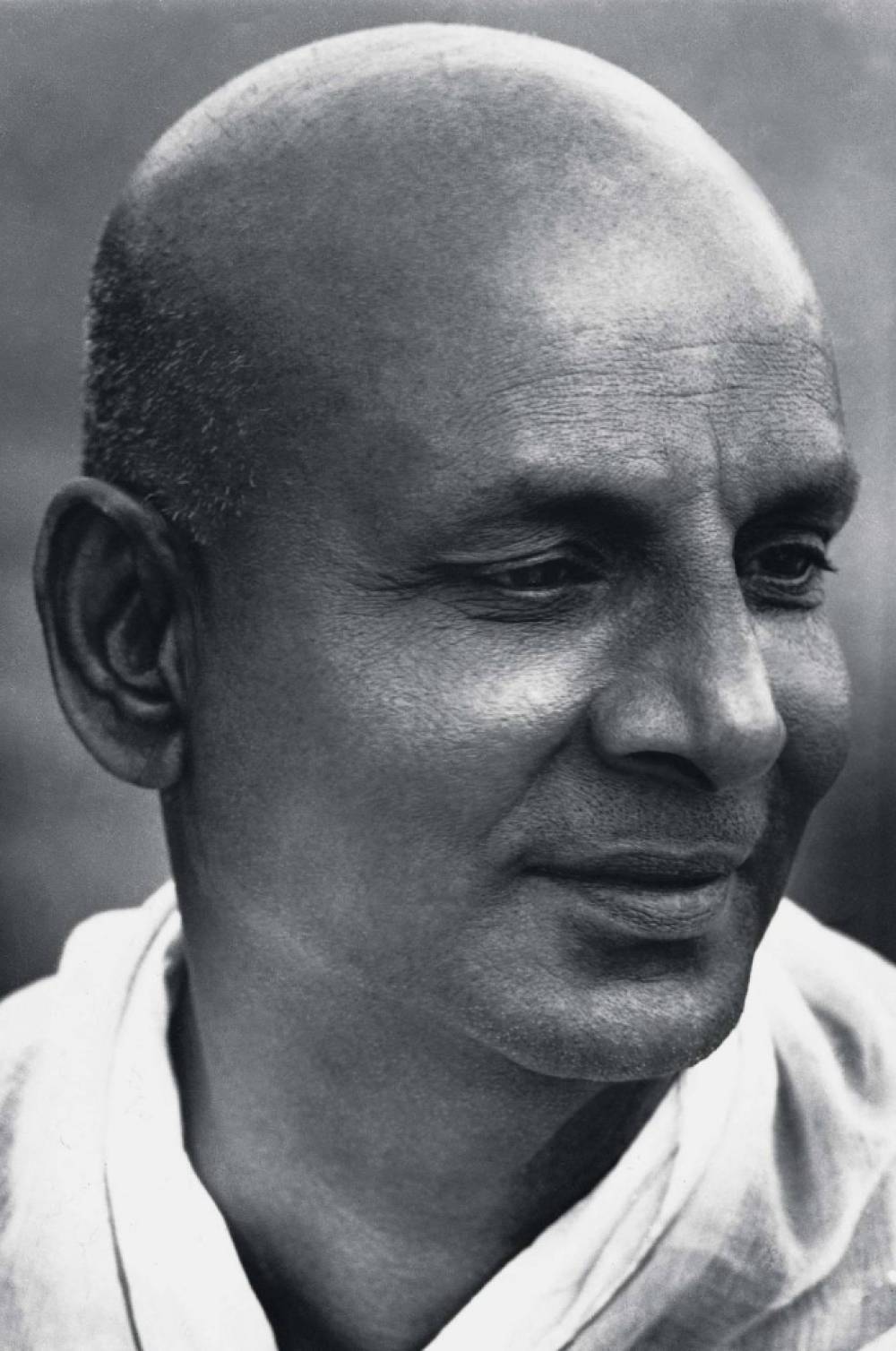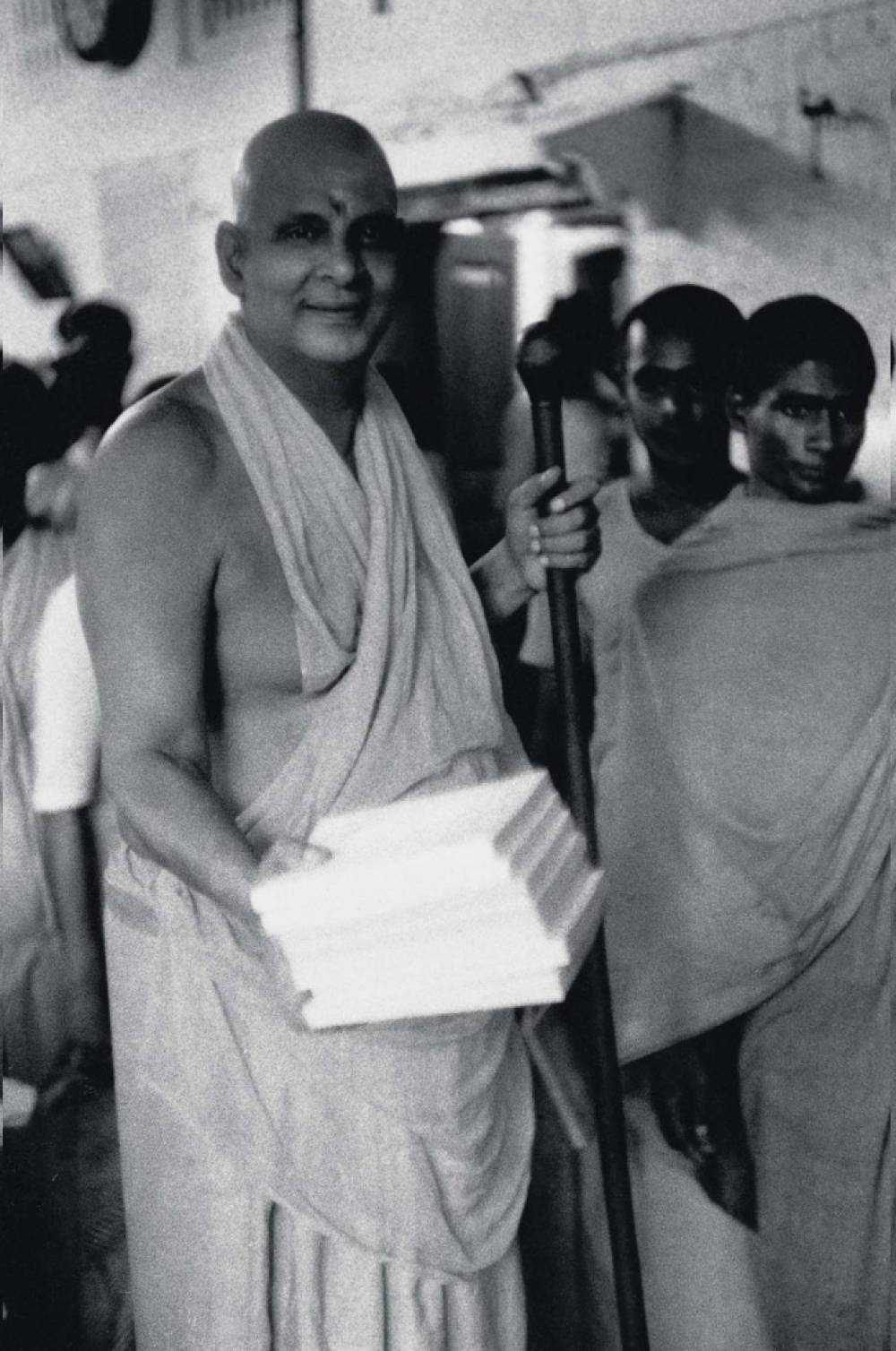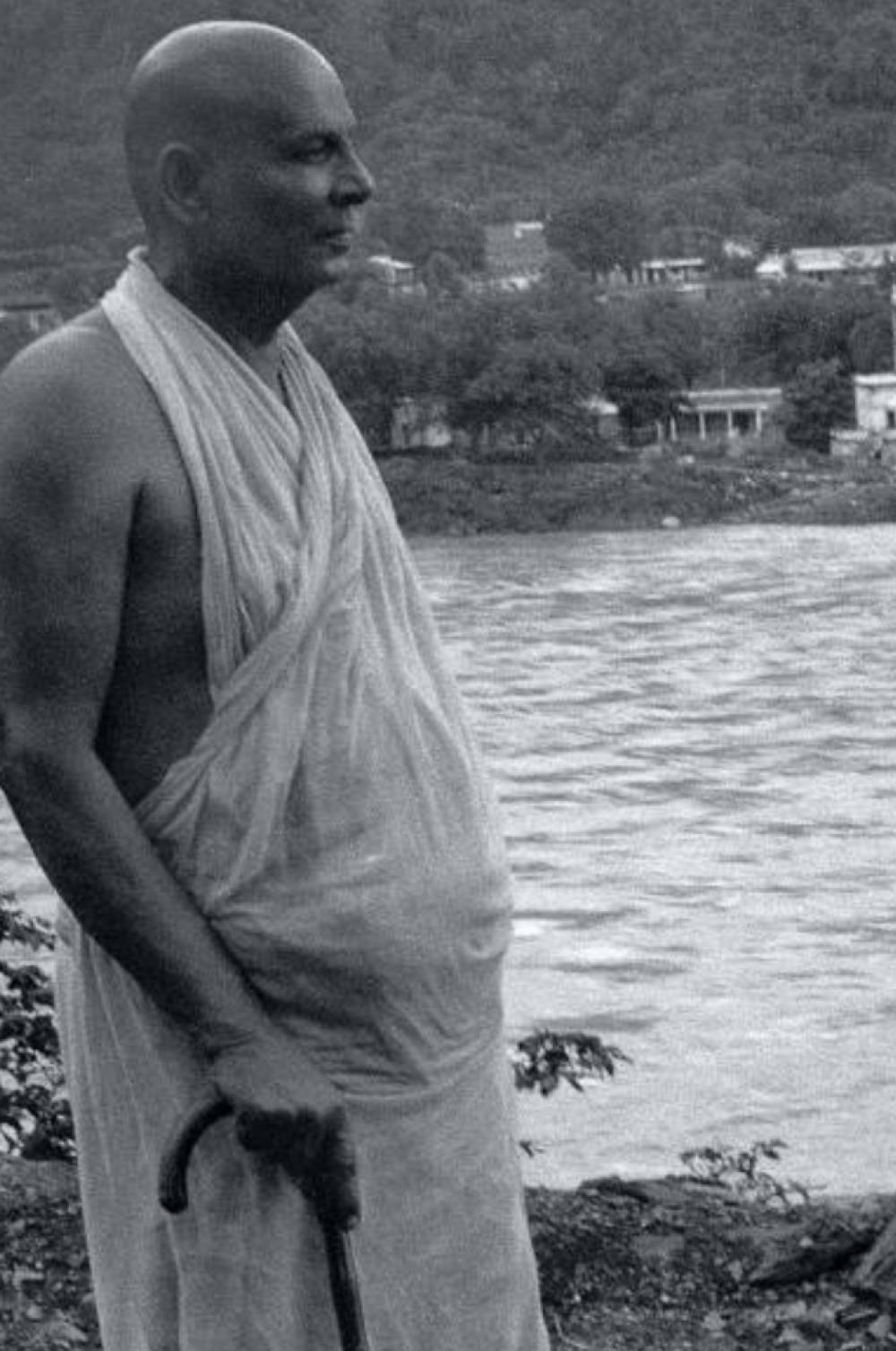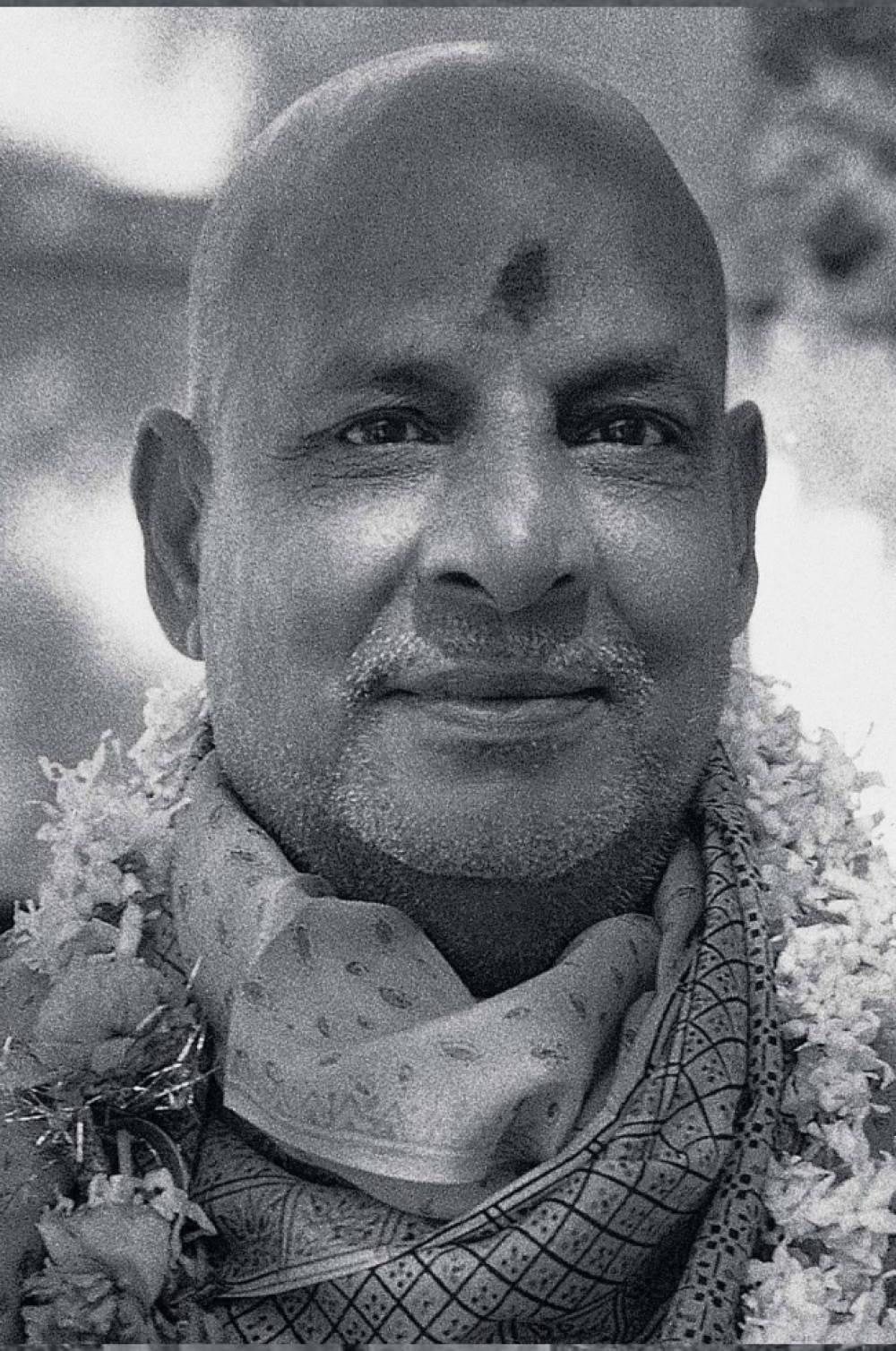The six purificatory exercises are Dhauti, Basti, Neti, Nauli, Trataka and Kapalabhati.
DHAUTIPurification is of two kinds, internal and external. Internal purification can be made in several ways. Here you will find the technique of an important exercise.
Take a fine piece of cloth; 3 inches wide and 15 feet long. The borders should be stitched well and no loose thread should be hanging from the sides. Wash it with soap and keep it always clean. Dip it in tepid water. Squeeze out the water and swallow one end of it little by little. On the first day swallow only one foot length of the cloth and draw it out slowly. After gradual practice you can swallow the whole length by catching one end of it. Keep it in the stomach for a few minutes and then slowly draw it out. Do not be hasty and draw out the cloth forcibly. When the Kriya is over, drink a cup of milk. This is a sort of lubrication, for the throat. Do this when the stomach is empty. Morning time is good. It will be quite sufficient if you practise this once in 4 or 5 days. This is an excellent exercise for those who are of a flabby and phlegmatic constitution. Gradual and steady practice cures gulma, gastritis and dyspepsia and all other diseases of the stomach.
Nauli is a powerful exercise for regenerating, invigorating and stimulating the abdominal viscera and the gastro-intestinal or alimentary system. For the practice of Nauli, you should have a good practice of Uddiyana Bandha.
Stand, with legs a foot apart and rest your hands on the thighs with a light curve of the back. Do a strong and forcible expiration through the mouth and keep the lungs completely empty. Contract and forcibly draw the abdominal muscles towards the back. This is Uddiyana Bandha. This is the first stage of Nauli.
Then let loose the centre of the abdomen. You will have all the left and right side of the abdomen. You will have all the muscles in the centre in a vertical line. This is called Madhyama Nauli. Keep it as long as you can retain the position comfortably. Then you can release the muscles and inhale. This is the second stage of Nauli.
After some practice, contract the right side of the abdomen and let loose the left side free. You will now have all the muscles on the left side only. This is called Vama Nauli. Again contract the left side and let loose the right side. This is Dakshina Nauli. By such gradual practice, you will understand how to contract the muscles of the central, left and right side of the abdominal muscles from side to side. Practise like this for a few days.
Then draw the muscles in the centre. Slowly move them to the right side and then to the life side in a circular way. Do this several times from the right to left and then do it in reverse way from the left to right side. You should move the muscles always with a circular motion slowly. When you advance in the practice you can do it quickly. This last stage of Nauli will appear like 'churning' when the abdominal muscles are isolated and rotated from side to side. When Nauli is demonstrated by advanced students, you will be surprised to observe the movements of the abdominal muscles. It will look as if an engine is working in the abdominal factory.
When beginners want to do Dakshina Nauli, they have to slightly bend towards the left side and contract left muscles. When they want to do Vama Nauli, they have to bend a little to the right side. In Madhyama Nauli push the entire muscles forward by contracting the two sides.
Nauli Kriya eradicates chronic constipation, dyspepsia and all other diseases of the gastro-intestinal system. The liver and pancreas are toned. All other abdominal organs will function properly.
This is steady gazing at a particular point or object without winking. This is mainly intended for developing the power of concentration and mental focus. This is very useful for all.
Sit on Padmasana or Siddhasana. You can sit erect even on a chair. Keep the picture of your Ishta Devata or the picture of OM or a black dot on a piece of white paper. Look at the point or picture very steadily. You can gaze at a bright star or on the flames of a ghee lamp. Gazing at the tip of the nose and at the space between the eyebrows is also Trataka. When you gaze at a particular point or picture, it is Trataka. Close your eyes and form a mental picture of the object. Practise this for 2 minutes and cautiously increase the period.
Trataka improves eye-sight. Diseases of the eyes are removed. Many have thrown away their spectacles after some practice in Trataka. It develops the power of concentration to a great degree.
Kapalabhati is an exercise for cleansing the skull. Kapala means 'skull' and Bhati means 'to shine.' This exercise makes the skull shining.
Sit on Padmasana or Siddhasana. Close the eyes. Perform Rechaka and Puraka rapidly. This should be practised vigorously. One will get perspiration profusely. This is a good exercise for the lungs also. Those who are well-versed in Kapalabhati can do Bhastrika very easily. Rechaka should be done forcibly by contracting the abdominal muscles. Do 20 expulsions for a round and gradually increase the number to 120. In Kapalabhati there is no Kumbhaka. Kapalabhati cleanses the respiratory system and the nasal passages. It removes the spasm in bronchial tubes. Consequently asthma is relieved and also cured in course of time. The apices of the lungs get proper oxygenation. Consumption is cured. Impurities of the blood are thrown out. The circulatory and respiratory systems are toned to a considerable degree.
Life in the individual, in its ontological aspect is but a ceaseless striving after non-ending unalloyed bliss, eternal, immortal, perennial Bliss. Scriptures have proved it beyond doubt. Sages and Saints are voicing it forth ever since the dawn of creation that Supreme Bliss can and should be had in one's own Self. Thus Self-realisation, Self-awareness or Self-experience-Whole, Aparokshanubhuti is the summum bonum of human existence. That alone will bring to an end all out pains and miseries. But, how best are we to attain that?
Atmachaitanya Samadhi or Aparoksha Jnana is possible only when the mind becomes pure and Sattvic. Purity of mind is had only when the little 'I,' egoism or Ahankara is curbed, annihilated which means that I-ness and Mineness have got to be abandoned. In turn, that involves purity and control of the Indriyas. Unless the mind is cultured and controlled, the Indriyas cannot be controlled. Thus, in a circular way, we come again to the mind. Rightly did the Sages exclaim: Mana Eva Manushyanaam Karanam Bandha-mokshayoh-Mind alone is the cause for man's release and bondage.
Practical investigation in that direction has led the Sages to conclude that Prana and Mind are interdependent in their functional abilities. As long as one remains uncontrolled, the other cannot be controlled. If one is under control, the other, too, comes under control of its own accord. It is not enough if they are simply controlled. As long as they are not annihilated Vasanas will not leave us. Unless Vasanas are destroyed Chitta cannot be destroyed. The destruction of Chitta alone can lead to Jnana.
Thus we are left with two courses. Firstly bring the Prana under control through various arduous Yogic processes, and then to control the mind and withdraw it from external objects and fix it on the Self. Secondly we can try to annihilate the mind through effecting Mano-laya by finding such a higher powerful principle towards which mind will naturally run and into which it will merge itself thus entering into a state of Laya. The sages found that Mano-Laya followed by Mano-Nasa was a safer means to attain Self-realisation than the arduous process of controlling the mind and culturing it which is always attended by the danger of the mind jumping into the old grooves of Vasanas at any moment.
In the course of further practical investigation the Sages and Seers found that Sound had the power to attract the mind and absorb it, so to say.
Thus Mano-Laya and Mano-Nasa through Nada Yoga (union or merger into Sound) was found to be an effective and safe means of Self-realisation.
Nadanusandhanam means meditation on Nada or Sound that is heard at the Anahata Chakra.
The essential prerequisites for this type of Sadhana are the same as those for any other Yoga Sadhana. Ethical and moral preparations are the first important prerequisites. Similarly, proficiency in Hatha Yoga and Pranayama is essential. It is better to have sufficient practice in concentration and meditation. That will make it easy for us to concentrate inwardly and meditate on the Anahata sounds. Ajapa Japa or Japa of 'Soham' with breath will help you in your concentration on the subtle sounds. That by itself will take you to the Anahata sound.
There are two aspects of these sounds, gross and subtle. You should proceed from the gross ones to the subtle ones. If the mind runs only towards the gross sounds, do not get perturbed. Let it get first accustomed to and established in the gross sound. Then it can be led to the subtle sound.
Bear in mind that Mano-Laya is not the goal but that Mano-Nasa and Self-realisation is the goal.
Remember not to take any special fancy or liking for any particular sound but try to lead the mind from the first to the second, from the second to the third, and so on to the tenth. There is another school of Nada Yoga that distinguishes three different stages in the hearing of the sounds.
The first stage is when the Prana and Apana are led near the Brahmarandhra. The second stage comes when they enter the Brahmarandhra and the third when they are well established in it. During the first stage sounds like that of the roaring sea, the beating of drums, etc., are heard. During the second, sounds like those of Mridanga, conch, etc., are heard. In the third stage, sounds like Kinkini, humming of the bee, sound of the flute or the lute, etc., are heard.
Knowledge pertaining to hidden things arise in a person who can hear well the seventh sound (like that of the flute).
Highly interesting and most popular among the forms of Nadopasana, is Sangita (music). It is in Sangita that Sreyas and Preyas, otherwise antagonistic to each other meet. Sreyas is that which leads to the Eternal Good of man, viz., Self-realisation. Preyas is that which is immediately pleasant. It is generally recognised that what is Preyas is not Sreyas and vice versa. But here in Sangita or Sankirtana, Sreyas and Preyas are found together.
Sangita pleases the ear, is a rich treat to the senses and the mind-in fact, so much so that the senses and the mind are tamed and controlled by it; and Sangita ennobles the soul and reveals the Self within. Music is, therefore, regarded as the best form of Nadopasana.
That prince among musicians, the emperor among composers, the crest-jewel among saints, the Bhakta-Siromani who adored the Lord with sweet, soul-stirring and perfect music-Sri Tyagaraja whose inspiring songs in praise of Lord Rama and on the fundamental truths of spiritual life are sung throughout India by every lover of music for inspiration and entertainment, has repeatedly pointed out the divine glory of music. He has again and again stressed the fact that music is not food for the senses alone, but is food for the soul.
Tyagaraja says in the Kriti "Nadopasana": "It is through Nadopasana that the Trimurtis, the sage-authors of great scriptures, the Maharshis who have propounded Dharma, the seers who are masters of the arts and sciences those who are devoted to music with its three integral parts of Bhava, Raga and Tala-all these are experts in Nadopasana." It is a great truth worth remembering that all our great scriptures-the Vedas, Smritis, Puranas, etc., are all set to music and are metrical compositions. There is rhythm, metre and melody in them. Sama Veda, especially is unrivalled in its music. That is why Sri Tyagaraja regards all the Maharshis and seers as Nadopasakas.
Tyagaraja says: "The knowledge of the science of music is capable of bestowing on you the State of Sarupya" (in his Kriti Sangita Sastra Jnanamu). Why? Because "All Sounds have emanated from Om." In another Kriti on the essence of Pranava, he says that Omkara, which is itself the essence of all Vedas, Agamas, Sastras and Puranas, can remove all your miseries and bestow eternal bliss upon you. He crowns this declaration with the marvellous revelation: "It is this Sangita that has taken form in this world as Rama." That is why he said in another Kriti that he who adores the Lord through Sangita will attain Sarupya Mukti. For, Sangita is identical with God; and in accordance with the truth that you become what you intently meditate upon the Nadopasaka becomes Nadasvarupa or God.
Sangita is not mere nerve titillation. It is a Yoga emphasising this truth. Sri Tyagaraja says in his "Sri Papriya": "Music which is composed of the seven Svaras is a treasure for the great Tapasvins who have cooled the Taapa Traya (Adhyatmika, Adhidaivika and Adhibhoutika Taapas)."
In fact, Tyagaraja would go so far as to declare that Moksha is impossible for one who has no music in him! He says in "Mokshamugalada": "Is there Moksha for those who have no knowledge of music which is based on Bhakti, who do not realise the truth that the Sapta-Svaras have emanated from the Pranava which is born of the union of Prana and Agni, and who have a liking for the mere melody of the Veena, but have not understood the Siva-Tattva?" Thus, whilst music is exalted to the status of a potent Sadhana for Moksha, Tyagaraja does not fail always to point out that the mere utterance of sounds will not bestow Moksha upon the songster and that the realisation of the Source and Goal of Music ought to be sought after.
If one realises this Truth, he attains Jivanmukti. Tyagaraja says in his "Ragasudharasa": "Drink the nectar of Ragam and get enlightened. Whatever Siddhi, the most difficult practices like Yaga, Yoga, etc., can bestow on you, you will easily get through Nadopasana. They are Jivanmuktas who have realised that Music which is nothing but Omkara born of the Self and which has Nada for its body-this Music adorned by the Sapta-Svaras is itself the Form of Sadasiva." Therefore it is that the Sadhaka is exhorted to realise the Siva-Tattva which is the Substratum for Music.
One cannot but be deeply moved at the wonderful tribute that Tyagaraja pays to Music, the Nadopasana, in his song, "Intakanna-anandamemi" in which he says: "Singing Thy glorious Names in melodious tunes and dancing in joy with the sole aim of having Thy Darshan-will this not do? Is this not the state for which even sages aspire?" For, Tyagaraja declares, Nadopasana itself bestows Advaitic realisation on the Sadhaka. He says in the same song: "In Thee I perceive the world and I merge myself in Thee, with my intellect clear and illumined."

